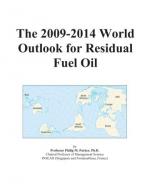|
This section contains 1,390 words (approx. 5 pages at 300 words per page) |

|
A residual fuel oil is any petroleum-based fuel which contains the undistilled residue from atmospheric or vacuum distillation of crude oil and may be called Bunker Fuel Oil, No. 6 Fuel Oil, or heavy Fuel Oil. When diluted with distillate to reduce viscosity, it may be called Marine Diesel Intermediate Fuel, No. 5 Fuel Oil, No. 4 Fuel Oil, or Light Fuel Oil) (Table 1). It is higher in viscosity than a distillate fuel, so it normally requires preheating for pumping and atomization. Asphaltenes, which are high molecular weight condensed aromatics in residual fuel, are difficult to burn completely, so combustion tends to give particulate emissions. Residual fuel usually contains organometallic compounds of vanadium, which leave an ash residue that may cause deposits and corrosion in boilers and engines because residual fuels are higher in sulfur and nitrogen than distillates. The emission of sulfur and nitrogen oxides during combustion is...
|
This section contains 1,390 words (approx. 5 pages at 300 words per page) |

|


